Calmivet Tablets and Injection
Calmivet Tablets and Injection contain acepromazine maleate. Acepromazine maleate is a phenothiazine derivative. Phenothiazines have a depressant action on the central nervous system, causing calm in the animal with muscular relaxation, indifference to the surrounding environment and attenuation of worry, nervousness and defence reactions. This action is partly due to an antagonistic action on dopamine receptors. The sedative effects last 4 to 8 hours, depending on the individual.
Description
Calmivet Tablets and Injection
Acepromazine Tablets and Injection for Horses, Dogs and Cats
Manufactured / Marketed by: Vetoquinol
Country of Origin: France
Dosage Form: Tablet / Solution for injection
Presentation:
Box of 4 blister strips of 10 tablets
Box of 10 blister strips of 10 tablets
Box of 2 blister strips of 10 tablets
Not all presentations may be marketed.
Ingredients & Composition:
One mL contains:
Active substance(s):
Acepromazine (in the form of maleate) 5mg
Excipient(s): Benzyl alcohol (E1519) 10mg
One 100 mg film-coated tablet contains:
Active substance(s):
Acepromazine (in the form of maleate) 12.50 mg
Excipient(s): Titanium oxide (E171) 3.78 mg
Description / Action:
Calmivet Tablets and Injection contain acepromazine maleate. Acepromazine maleate is a phenothiazine derivative. Phenothiazines have a depressant action on the central nervous system, causing calm in the animal with muscular relaxation, indifference to the surrounding environment and attenuation of worry, nervousness and defense reactions. This action is partly due to an antagonistic action on dopamine receptors. The sedative effects last 4 to 8 hours, depending on the individual.
After oral / parenteral administration, absorption is rapid and complete. The plasma peak is reached in 1 hour 30 to 3 hours. Acepromazine is highly bound to plasma proteins. Elimination occurs mainly through feces on oral administration and through urine on parenteral administration. It is also excreted through milk.
Class: Tranquilizer / Sedative (central nervous system sedative, neuroleptic, phenothiazine group)
Indication / Usage:
In horses (not intended for human consumption), dogs and cats:
– Tranquilization and pre-anesthesia.
Dosage/ Administration / Feeding Directions:
Tablets:
In Dogs: 1.25 – 5 mg per kg body weight, or 1 to 2 tablets per 10 kg body weight.
In Cats: 2.5 mg per kg body weight or 1 tablet per 5 kg of body weight.
Make drinking water available to animals after administration of the tablets in order to accelerate their disintegration in the digestive tract.
Injection:
Horses:
Light tranquilization or pre-anesthesia:
Intramuscular route:
0.05 mg of acepromazine per kg of body weight, i.e. 1 mL of solution per 100 kg of body weight.
Extensive tranquilization:
Intravenous route:
Up to 0.10 mg of acepromazine per kg body weight, i.e. up to 2 mL of solution per 100 kg body weight.
Intramuscular route:
Up to 0.20 mg of acepromazine per kg body weight, i.e. up to 4 mL of solution per 100 kg body weight.
Dogs and cats:
Light tranquilization or pre-anesthesia:
Intravenous or intramuscular routes:
0.25 mg of acepromazine per kg of body weight, i.e. 0.5 mL of solution per 10 kg of body weight.
Extensive tranquilization:
Intravenous or intramuscular routes:
0.5 mg of acepromazine per kg of body weight, i.e. 1 mL of solution per 10 kg of body weight.
Intravenous use: short latency time of 5 to 7 minutes.
Intramuscular route: latency time of 20 to 30 minutes.
Route of administration:
Tablets: Oral route
Injection: Intravenous, intramuscular
Onset of action:
Tablets should be administered 10 to 30 minutes before the effect is obtained.
Duration of action:
Approximately the same for the different methods of administration and, on average, 8 to 10 hours.
Administration can be repeated after 3 to 6 hours if necessary. However, prolonged use is not recommended.
The above prescribing information is provided as a guide and should be tailored to the individual animal, taking into account various factors (e.g. temperament, breed, nervousness, etc.) which are likely to affect sensitivity to sedatives.
Acepromazine is normally administered as a single dose. The amount of anesthetic required for induction of anesthesia may be significantly reduced following administration of acepromazine.
Overdose (symptoms, emergency response, antidotes), if necessary:
Overdose leads to early onset of sedative symptoms and prolonged effect. The effects of overdose are ataxia, hypotension, hypothermia and extrapy.
Noradrenaline can be used to counter cardiovascular effects.
In contrast, epinephrine (adrenaline) is contraindicated in the treatment of acute hypotension induced by acepromazine overdose, as it may cause a further decrease in blood pressure.
There is no antidote.
In the event of an overdose, symptomatic treatment may be required.
Waiting time:
Not applicable for dogs and cats. Horses: do not use in horses whose meat, offal and milk are intended for human consumption.
Adverse reactions (frequency and severity):
Hypotension is very rarely reported.
Apnoea has very rarely been observed in cats and dogs.
Leukopenia, leucocytosis, eosinophilia, dermal reactions, and skin pigmentation may also very rarely occur after repeated administration.
The frequency of adverse reactions is defined according to the following convention:
very common (more than 1 in 10 treated animals presenting adverse effects)
common (more than 1 but less than 10 animals out of 100 animals treated)
uncommon (more than 1 but less than 10 animals out of 1,000 animals treated)
rare (more than 1 but less than 10 animals out of 10,000 animals treated)
very rare (less than 1 animal in 10,000 animals treated, including isolated cases).
Use during pregnancy, lactation or laying:
The safety of the drug has not been established during gestation and lactation. In the absence of data, its use during gestation or lactation is not recommended.
Drug Interactions and other forms of interactions:
Do not use the product in combination or in animals recently treated with organophosphates and/or procaine hydrochloride as the activity and toxicity of acepromazine could be amplified.
The depressant effect of acepromazine on the central nervous system increases with the concomitant administration of other molecules having the same depressant effect (morphine, barbiturates, xylazine).
Do not administer with hypotensive products. Opioids and adrenaline may enhance the hypotensive effects of acepromazine. When general anaesthesia is required within 4 to 6 hours of drug administration, be sure to reduce induction doses of other premedication agents and general anaesthetics, such as halothane or barbiturates, to avoid potentiation and addition of depressant effects,
Other interactions have been noted with the following molecules: epinephrine (adrenaline), quinidine, metoclopramide, morphine, antidiarrheals, antacids.
Contraindications /Warnings:
Do not use in animals under stress.
Do not use in case of hypersensitivity to the active substance or any of the excipients.
Do not use in case of hypothermia, hypovolemia, shock or heart failure.
Do not use in cases of hematological disorders, coagulopathies and anemia.
Special warnings for each target species:
None
Special precautions for use:
i) Special precautions for use in animals
Acepromazine is hypotensive and may cause a transient decrease in haematocrit. The product should be administered with great caution, and only at low doses, to weakened animals. Administration of acepromazine should be preceded, when necessary, by rehydration.
As this veterinary medicinal product is metabolized by the liver, it should be used with caution and at a reduced dose in cases of liver disease,
Acepromazine may cause hypothermia due to depression of the thermoregulatory center and peripheral vasodilation,
The analgesic effect of acepromazine is negligible. Avoid painful procedures when handling tranquilized animals.
After administration of this veterinary medicinal product, any animal (especially aggressive dogs and horses) should be kept in a quiet environment, and sensory stimuli should be kept to a minimum.
This product may induce positive reactions during anti-doping controls.
Dogs:
In dogs with the ABCB1-1Δ (also called MDR1) mutation, acepromazine tends to cause deeper and prolonged sedation. In these dogs, the dose should be reduced by 25-50%.
In some dog breeds, particularly brachycephalic breeds, unconsciousness, or spontaneous syncope may occur due to the development of sinoatrial block caused by excessive vagal tone.
In order to prevent the occurrence of these events, the administration of the lowest possible dose of medication should be favoured. If there is a history of syncope of this type, or detection of a bradyarrhythmia, it may be beneficial to control the dysrhythmia by administering atropine just before acepromazine.
The lowest possible should be used in large dogs, as the latter are particularly sensitive to acepromazine.
Horses:
In stallions, the use of the lowest dose range is indicated to minimize the risk of penile prolapse.
ii) Special precautions to be taken by the person administering the veterinary medicinal product to animals:
This product has sensitive action. Avoid accidental ingestion or self-exposure during the handling and administration of this product.
Always keep packaging out of the sight and reach of children. Do not let children play with the tablets. If a tablet is accidentally swallowed, or in case of self-injection contact your doctor immediately and show the package leaflet or the label to the physician, but DO NOT DRIVE as the product may cause sedation. Symptomatic treatment may be required.
If this product comes in contact with eyes or skin, it may cause irritation. Wash your hands or exposed skin thoroughly after administering the product.
In the event of accidental spills, remove contaminated clothing and wash the affected area with plenty of water and soap. Consult a doctor if irritation persists.
In case of accidental contact with eyes, rinse immediately with plenty of water for 15 minutes and consult a doctor if irritation persists.
People with sensitive skin or in repeated contact with the veterinary medicinal product are advised to wear impervious gloves.
iii) Other precautions
Not applicable.
Pharmaceutical precautions / Instructions:
No special storage precautions. Store in cool, dry & dark place.
The duration of the conversation:
Shelf life of the veterinary medicinal product as packaged for sale:
Tablets – 5 years. Injection – 3 years. After opening primary packaging – 28 days.
Not For Human Use. For Animal Treatment or Veterinary use Only.
Special precautions to be taken when disposing of unused veterinary medicinal products or waste derived from the use of these medicinal products – Empty packaging and any remaining product must be disposed of according to current practices governed by waste regulations.
Substitute: Pooch Acepron tablets,
Only logged in customers who have purchased this product may leave a review.


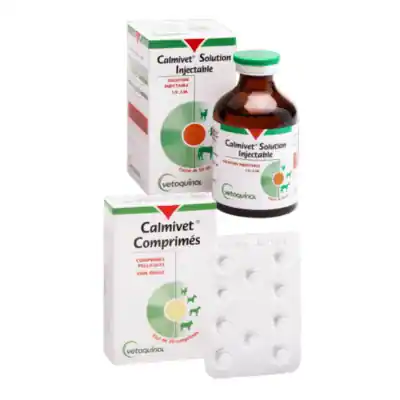
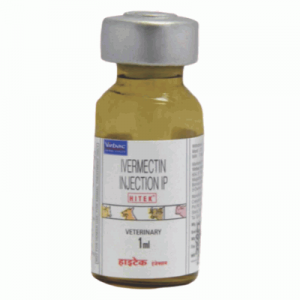
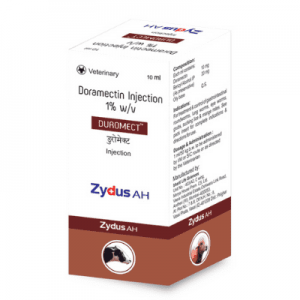
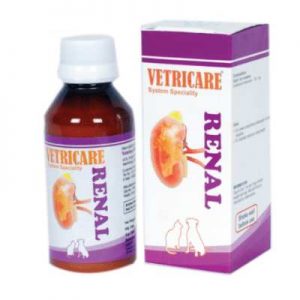
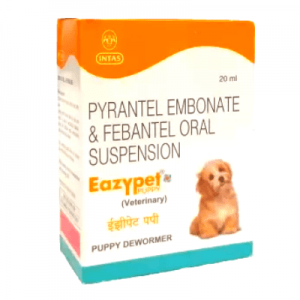
Reviews
There are no reviews yet.